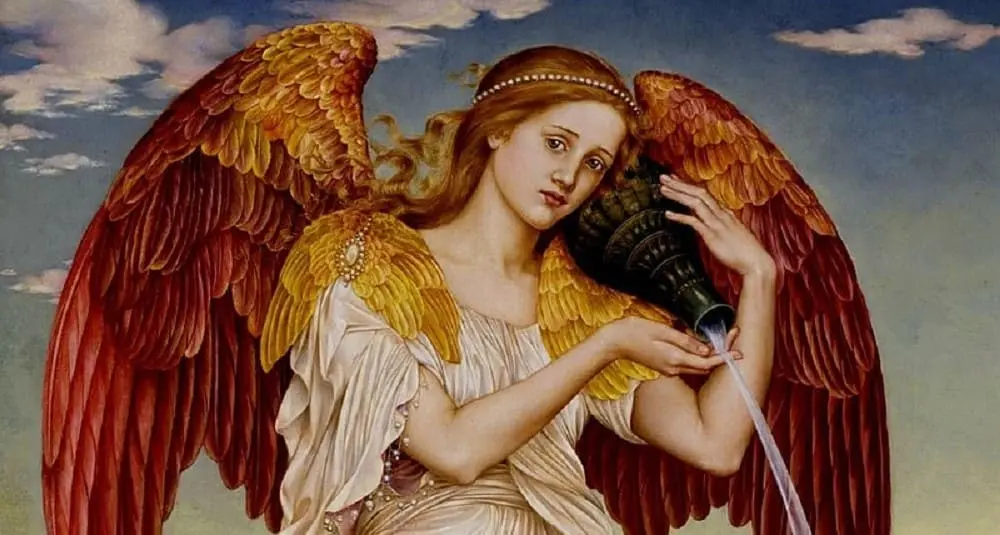Who was Eos in Greek mythology?
Last Updated:
In Greek mythology, Eos is the goddess of dawn, announcing the arrival of the Sun each morning. Daughter of the Titans Hyperion and Theia, she is the sister of Helios (the Sun) and Selene (the Moon). Her cosmic role is fundamental: she is responsible for opening the gates of heaven each morning, enabling the chariot of Helios to illuminate the world.
Eos is usually depicted as a splendid rose-fingered woman with golden wings, flying across the sky to herald the dawn. In Greek literature, Homer, in the Iliad and Odyssey, often evokes her appearance with the poetic expression “the rose-fingered dawn”, emphasizing the softness and beauty of her first glimmers in the sky.
She crosses the firmament on a chariot drawn by two winged horses, Lampus and Phaeton, whose names mean “brilliant” and “radiant” respectively, in reference to the light she brings to the world. Her role thus symbolizes daily rebirth and the uninterrupted cycle of time.
Eos is also known for her many love stories, often marked by sadness and the cruel fate of her lovers. One of the most famous is that of Tithon, a Trojan prince with whom she falls in love. According to legend, she begs Zeus to grant her immortality so that they can remain together forever. But she forgets to ask him for eternal youth. Tithon thus becomes immortal, but ages inexorably until he becomes a senile, weakened creature, unable to move or speak.
Another of her lovers, Orion, dies tragically, while Cephalus, whom she kidnaps for love, eventually leaves her to return to his wife Procris. This relentless quest for mortal companions, often doomed to failure, makes Eos a figure marked by melancholy and the eternal desire for love.
Although a goddess associated with light and the sweetness of the morning, Eos is also linked to war. In the Iliad, she is described as the mother of Memnon, an Ethiopian king who fights on the side of the Trojans and is killed by Achilles. After her son’s death, she implores Zeus to grant her a special honor. Touched by her grief, the king of the gods transforms Memnon’s warriors into birds called Memnonides, who come every year to mourn their lost leader.
In some traditions, Eos is associated with the morning stars. Some legends claim it is linked to Venus, the bright morning star that appears just before dawn.
Eos plays a crucial role in the transition between day and night. Her appearance heralds the natural order of things and enables the Sun to perform its daily duty. In Greek thought, she was an indispensable figure in the harmony of the cosmos, ensuring that light always follows darkness.
Today, Eos remains a fascinating mythological figure, embodying beauty, renewal and the inexorable passage of time. Her name has been taken up in astronomy, notably to designate a group of asteroids, as well as in popular culture, where she symbolizes dawn and the light of dawn.
Eos is an essential goddess of Greek mythology, personifying the Dawn and playing a fundamental role in the cosmic cycle. Both luminous and melancholy, she is a deity both gentle and tragic, whose stories illustrate the fleeting beauty of the morning and the ephemeral nature of love and time.
You may also be interested in
history

Who was Eos in Greek mythology?
Answer
In Greek mythology, Eos is the goddess of dawn. Daughter of the Titans Hyperion and Theia, she opens the gates of heaven every day to allow the sun to shine.